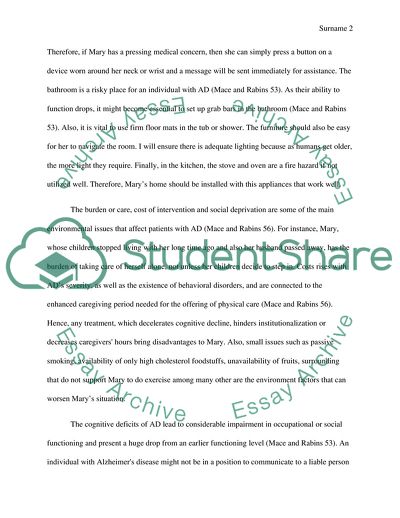Cite this document
(Alzheimer's Disease and Autism Essay Example | Topics and Well Written Essays - 1750 words, n.d.)
Alzheimer's Disease and Autism Essay Example | Topics and Well Written Essays - 1750 words. https://studentshare.org/psychology/1814511-pick-two-2-scenarios-from-below-i-expect-3-4-pages-per-scenario-address-the-following-questionsissues-for-each-of-the-two-scenarios-you-selected
Alzheimer's Disease and Autism Essay Example | Topics and Well Written Essays - 1750 words. https://studentshare.org/psychology/1814511-pick-two-2-scenarios-from-below-i-expect-3-4-pages-per-scenario-address-the-following-questionsissues-for-each-of-the-two-scenarios-you-selected
(Alzheimer'S Disease and Autism Essay Example | Topics and Well Written Essays - 1750 Words)
Alzheimer'S Disease and Autism Essay Example | Topics and Well Written Essays - 1750 Words. https://studentshare.org/psychology/1814511-pick-two-2-scenarios-from-below-i-expect-3-4-pages-per-scenario-address-the-following-questionsissues-for-each-of-the-two-scenarios-you-selected.
Alzheimer'S Disease and Autism Essay Example | Topics and Well Written Essays - 1750 Words. https://studentshare.org/psychology/1814511-pick-two-2-scenarios-from-below-i-expect-3-4-pages-per-scenario-address-the-following-questionsissues-for-each-of-the-two-scenarios-you-selected.
“Alzheimer'S Disease and Autism Essay Example | Topics and Well Written Essays - 1750 Words”. https://studentshare.org/psychology/1814511-pick-two-2-scenarios-from-below-i-expect-3-4-pages-per-scenario-address-the-following-questionsissues-for-each-of-the-two-scenarios-you-selected.


